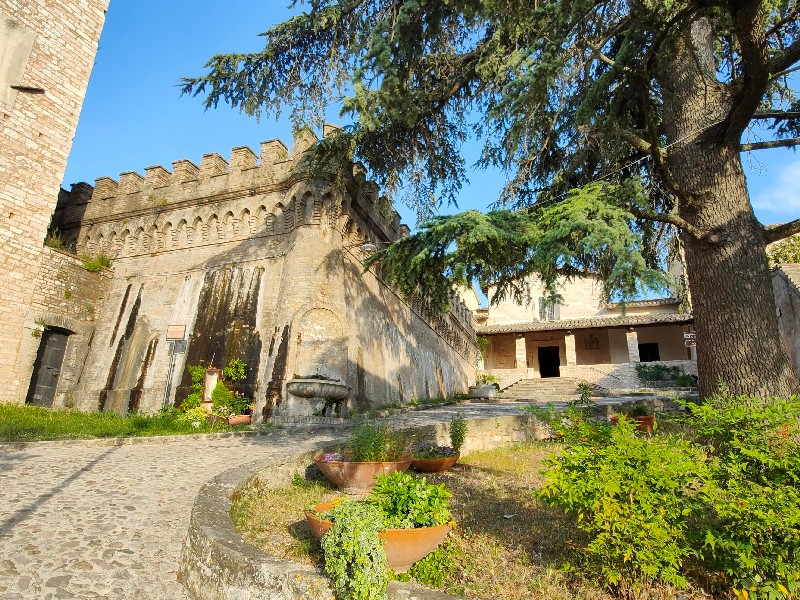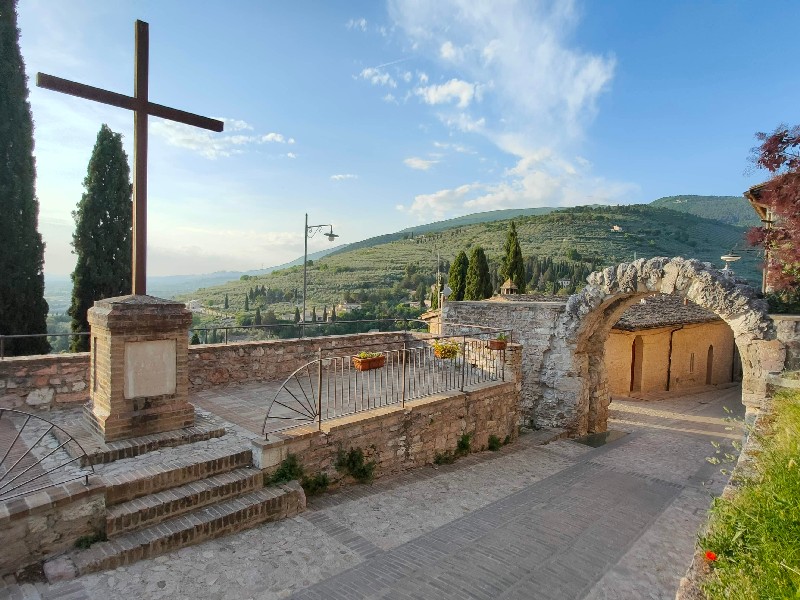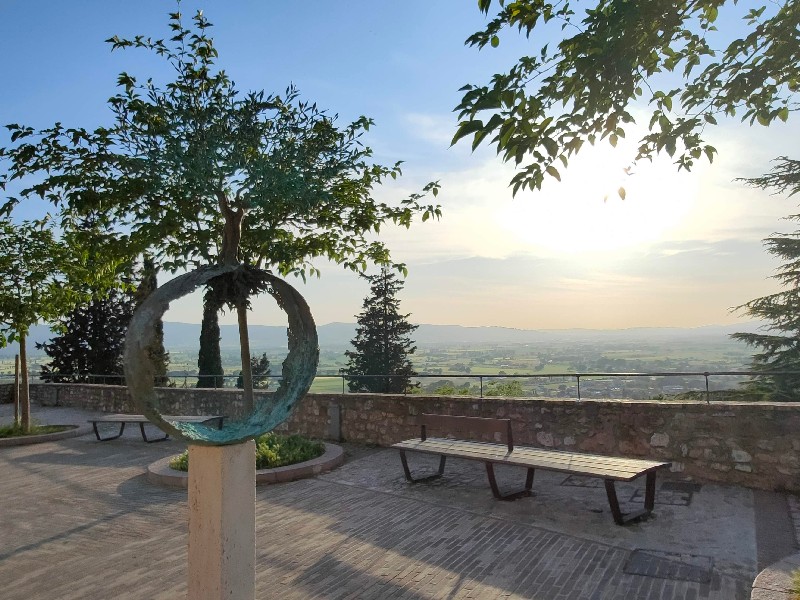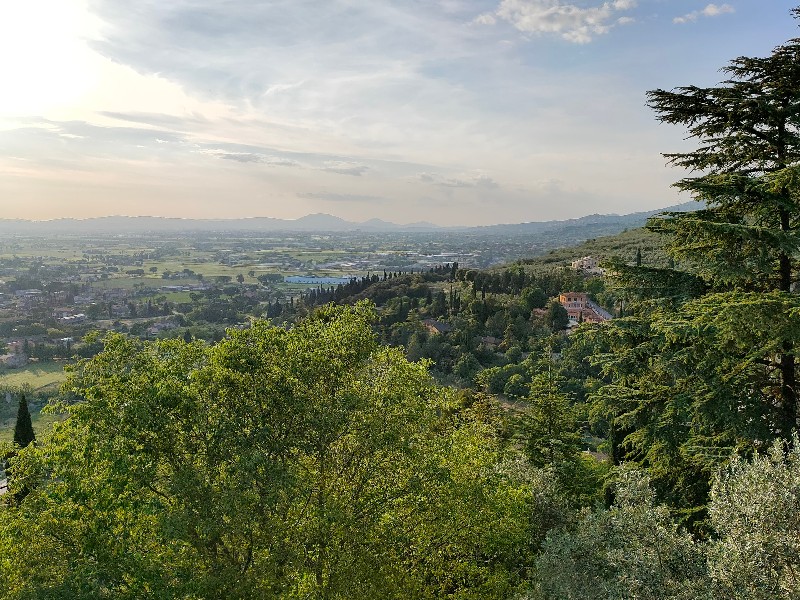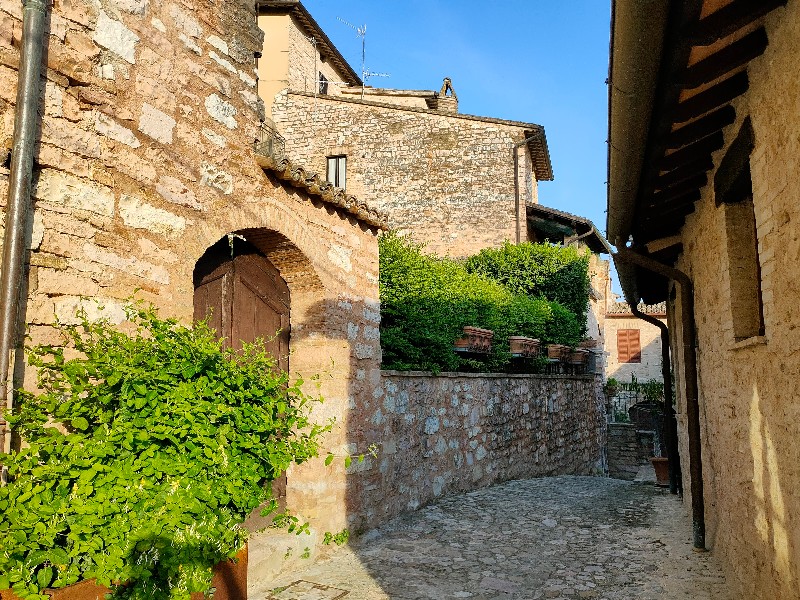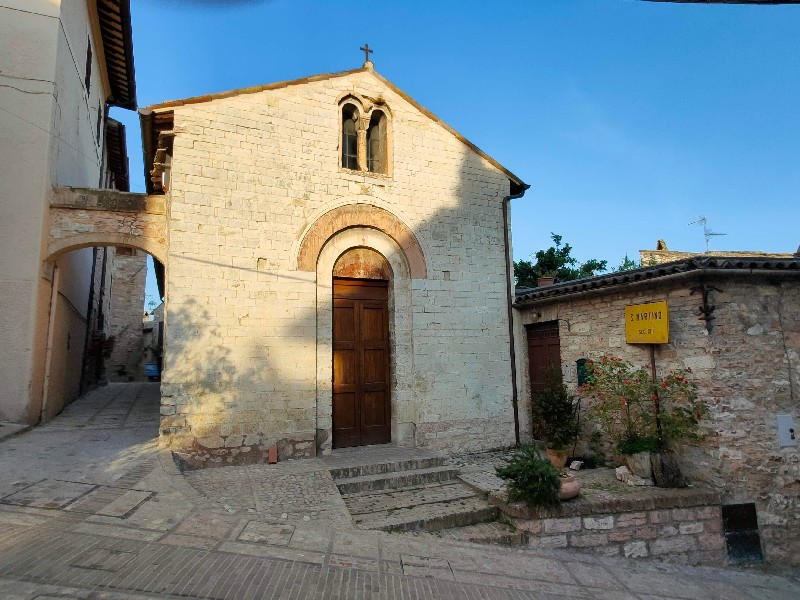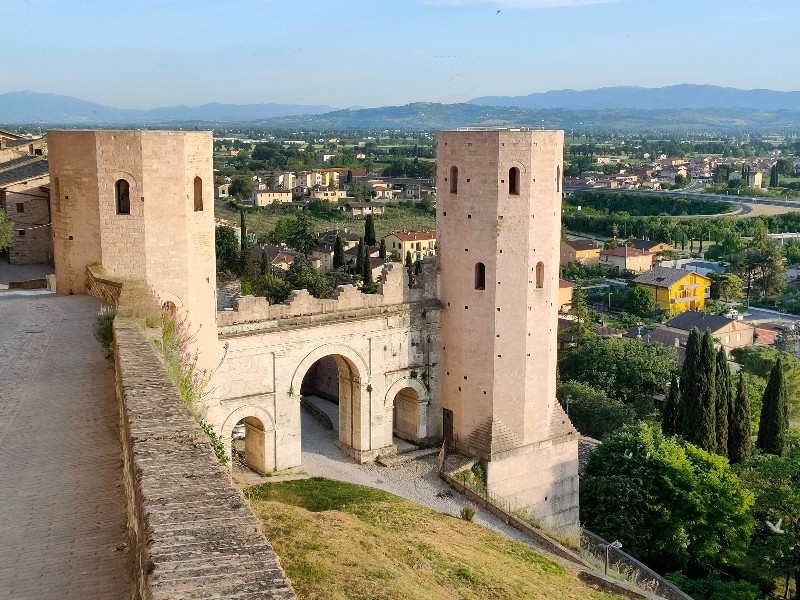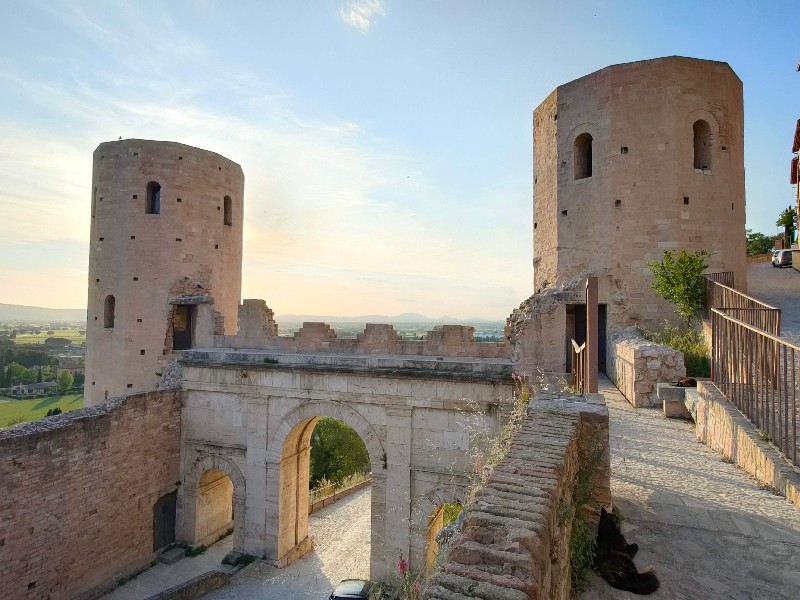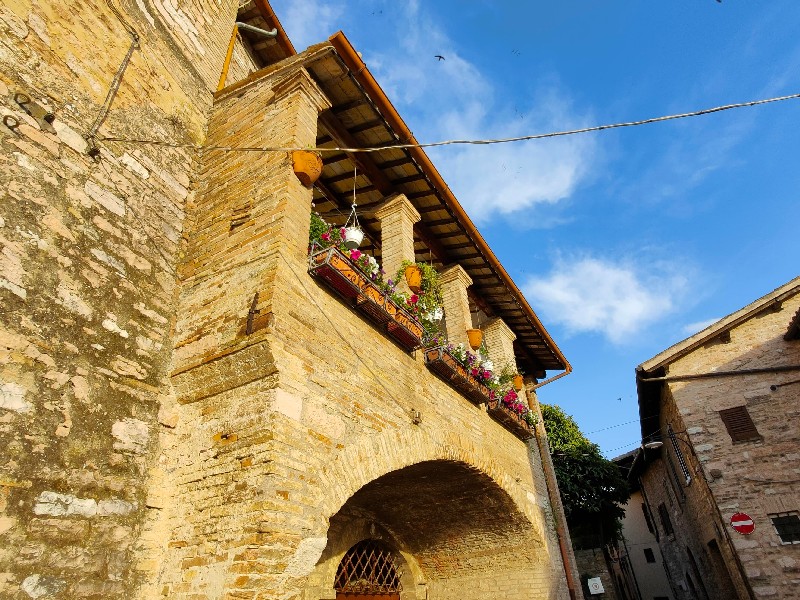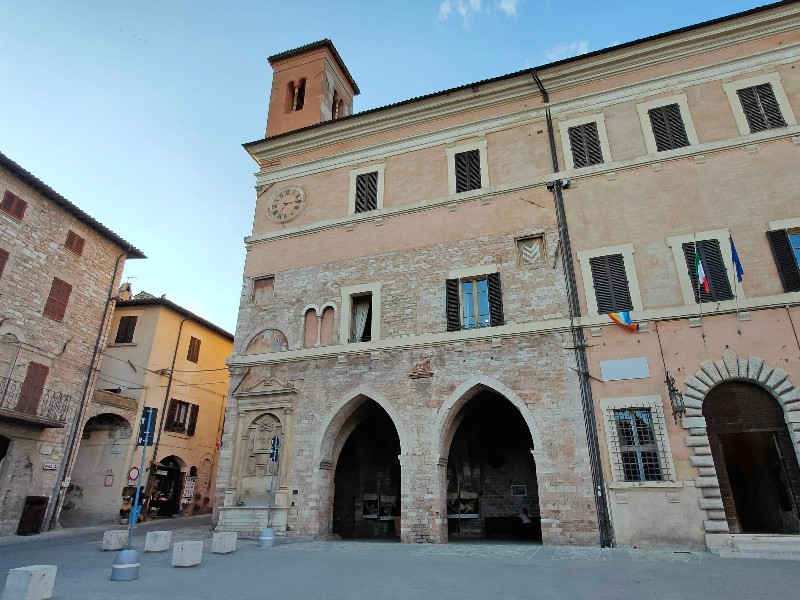The ancient Hispellum rises on the southern edge of Mount Subasio, projecting towards the Umbrian Valley.
The first settlement dates back to the 7th century BC. In pre-Roman times it was an important Umbrian centre, born as a function of the great ethnic Umbrian sanctuary, which was located where today is Villa Fidelia. Gradually, it entered in the Roman rule and in 90 BC. became municipium. A few decades later, in the Augustan age, the city was re-founded with the title of Colonia Julia Hispellum.
After the fall of the Roman Empire, Spello suffered many destructions by the Goths of Totila, then becoming part of the Longobard Duchy of Spoleto. It was an independent municipality starting from the 12th century, and for a couple of centuries it was under the control of the Baglioni of Perugia on behalf of the State of the Church; it remained part of the Papal State until 1860.
The city still retains many Roman vestiges, such as the monumental Porta Consolare.

Il progetto Divina Foligno è sviluppato nell’ambito del “programma Agenda urbana di Foligno Smart community - Comunità, Sostenibilità – Foligno 2020” intervento OT.6 INT_01 “Realizzazione della rete di attrattori culturali attraverso la realizzazione di itinerari culturali e tematici

The Divina Foligno project is promoted and financed as part of the "Urban Agenda of Foligno Smart community - Community, Sustainability - Foligno 2020 program" intervention OT.6 INT_01 "Creation of a network of cultural attractions through the creation of cultural and thematic itineraries"

Copyright © 2022 Landmark. All rights reserved.


